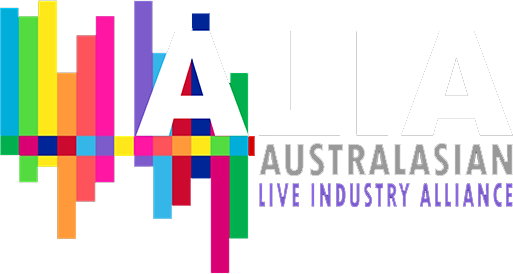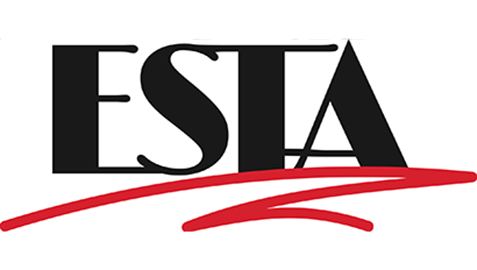ESTA‘s Technical Standard Program announces three newly-published standard reaffirmations, and seven documents now in public review: Three of ESTA’s existing standards were approved for reaffirmation recently, and have been published, now available for free. Seven documents — one reaffirmation, two new draft standards, and four revised draft standards — are now in public review until April 8, 2024.
Two reaffirmed standards from the Fog & Smoke Working Group:
ANSI E1.5 – 2009 (R2024), Entertainment Technology – Theatrical Fog Made with Aqueous Solutions of Di- and Trihydric Alcohols
ANSI E1.5 describes the composition of theatrical fogs or artificial mists that are not likely to be harmful to otherwise healthy performers, technicians, or audience members of normal working age. This standard is intended to be applied in theatres, arenas, and other places of entertainment or public assembly where theatrical fogs and mists are often used. It lists what is permissible in the fog or haze and how much can be there on a short-term and long-term basis.
ANSI E1.29 – 2009 (R2024), Product Safety Standard for Theatrical Fog Generators
ANSI E1.29 is a guide for product safety testing laboratories in evaluating fog-making equipment for design or construction defects that might create unacceptable hazards. It is based on ANSI/UL 998 – 2006, Humidifiers, but has modifications to deal with safety issues peculiar to fog generators. Fog generators often are evaluated as heating appliances to assure they are not a fire or shock hazard. ANSI E1.29 considers those issues, but also has safety tests for the fog generated.
One reaffirmed standard from the Floors Working Group:
ANSI E1.34 – 2009 (R2024), Entertainment Technology – Measuring and Specifying the Slipperiness of Floors Used in Live Performance Venues
ANSI E1.34 describes a very simple drag-sled for measuring the slipperiness of a performance floor, and two procedures to use with the sled. One uses standardized stainless steel feet on the sled to give a coefficient of friction number that can be used to describe the floor in a general way. The second procedure measures the slipperiness with a performer’s shoe sole materials. ANSI E1.34 is intended for performance floors; it is not intended for measuring the slipperiness of normal walking surfaces, such as hallways and sidewalks.
All three standards are available for free download at the TSP’s Published Documents download page, found at tsp.esta.org/freestandards.
In Public Review:
One standard for reaffirmation from the Control Protocols Working Group:
BSR E1.30-11 – 2019 (202x), EPI 33. ACN Root Layer Protocol Operation on TCP
This review is for reaffirmation of ANSI E1.30-11 – 2019 (EPI 33), which specifies the operation and formats for the ACN Root Layer Protocol [Arch] operating on [TCP].
One revised draft standards from the Control Protocols Working Group:
BSR E1.20, RDM Remote Device Management Over DMX512 Networks The Remote Device Management (RDM) protocol permits intelligent bi-directional communication between devices from multiple manufacturers utilizing a modified DMX512 data link. RDM permits a console or other controlling device to discover and then configure, monitor, and manage intermediate and end-devices connected through a DMX512 network. This standard specifies: the physical layer and timings, device discovery process and algorithms, message structure and communication.
One revised draft standard from the Floors Working Group:
BSR E1.60, Guidelines for the Use of Raked Stages in Live Performance Environments
This standard, a revision of ANSI E1.60 – 2018, provides guidance for the use of raked stages in live performance environments. It defines a rake and offers guidance to mitigate associated risks for the protection of performers, crew members, technicians, and all others accessing the raked stage. The revision includes enhanced guidance on risk assessments.
One new draft standard from the Event Safety Working Group:
BSR ES1.2, Event Safety – Planning and Management
This standard describes a process for event stakeholders to create and implement event-related plans for health and safety management. This process includes a framework, guidelines, and recommended practices that can be used to reduce risk as much as reasonably practicable and to respond appropriately and reasonably when an incident occurs within the event. It intends to identify and describe the steps necessary to create a reasonable level of safety throughout all phases of an event through the use of effective safety planning, management and incident response.
One new draft standard from the Stage Machinery Working Group:
BSR E1.64, Stage Machinery Control Systems
This standard establishes minimum requirements for the design, manufacture, installation, commissioning, inspection, operation, and maintenance of machinery control equipment in the Entertainment Industry including equipment that is used in production, touring, and temporary or permanent installation. This standard offers guidance in the selection of sensors used to provide feedback of information gathered from the machinery and sent to the control system. It focuses on control equipment, user devices, enclosure assemblies, incoming power, cable assemblies, and the action/reaction of control signals and motive power.
One revised draft standard from the Electrical Power Working Group:
BSR E1.51, Portable Power Cable Systems in Canada
This is a revision of ANSI E1.51 – 2018, The Selection, Installation, and Use of Single-Conductor Portable Power Feeder Cable Systems for Use At 600 Volts Nominal or Less for the Distribution of Electrical Energy in the Television, Film, Live Performance and Event Industries in Canada. It is about what the title says it is about: It gives guidance on how to safely use single-conductor portable power feeder cable, a power distribution technique about which the Canadian Electrical Code (CEC) has been largely silent. This revision incorporates new changes made in the recently updated CEC.
One revised draft standard from the Rigging Working Group:
BSR E1.43, Performer Flying Systems
This document, an overhaul revision of ANSI E1.43-2016, establishes a minimum level of performance requirements for the design, manufacture, use, and maintenance of statically hung, manually driven, mechanized, and automated performer flying systems used in the production of entertainment events. A performer flying system includes the components, personnel, and procedures used to suspend or transport performers through the air, including the attachment to the facility or other supporting structure down to and including the elements to which the performer is connected. Situations covered by this standard pertain to any and all locations of the flight path, including off-stage, over the stage, and over the audience.
All of these documents, including their respective public review forms and instructions, are available from the TSP’s Public Review Documents download page, found at tsp.esta.org/publicreview.
Return the public review form and any comments you may have before April 8, 2024.




















































